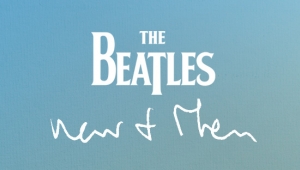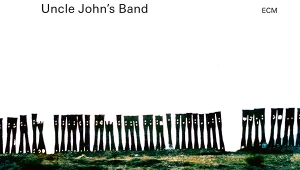| Columns Retired Columns & Blogs |
November 2022 Classical Record Reviews

Sarah Willis: Mozart y Mambo: Cuban Dances
Sarah Willis, French horn; Havana Lyceum Orchestra/José Antonio Méndez Padrón
Alpha878 (CD, reviewed as 24/96 WAV). 2022. Christoph Franke, prod.; Andreas Wolf, Julian Schwenkner, engs.
Performance *****
Sonics ****
Sarah Willis, French horn; Havana Lyceum Orchestra/José Antonio Méndez Padrón
Alpha878 (CD, reviewed as 24/96 WAV). 2022. Christoph Franke, prod.; Andreas Wolf, Julian Schwenkner, engs.
Performance *****
Sonics ****
Joy unbounded—just what many of us need right now. In a reprise of her first recording of this sort, Sarah Willis, Berlin Philharmonic French horn player and internet star, teams up with the Havana Lyceum Orchestra to complement Mozart's first two horn concertos with a new work, "Cuban Dances for Solo Horn, Strings, and Percussion."
In addition to those three pieces, the album holds three other gems, including two arrangements of classic Cuban songs with the Buena Vista Social Club's Carlos Calunga, a chorus, and BVSC güiro player Enrique Lazaga. The bonus prize comes with the final track, Edgar Olivero's delightful Pa Pa Pa, inspired by the mating dance between Pagageno and Pagagena in Mozart's The Magic Flute.
On first consideration, a new, six-movement horn concerto in which Cuban composers from six different areas of the island adapt well-known Cuban dances to a loosely classical form may seem a bit of a stretch. But when we recall that the movements of J.S. Bach's greatest works, including the Six Suites for Solo Cello, were identified by their character as dances, the concerto makes more sense. It's eyebrow-raising, perhaps, given the populist nature of the Cuban idiom, but so colorful and delightful that many listeners' sole quibble may be that they feel compelled to abandon their sweet spot on the couch for what may be their newly anointed dance floor.
As Willis explains in her expertly assembled YouTube album teaser, the musicians of José Antonio Méndez Padrón's chamber orchestra play wonderfully, but their instruments are poor. Everyone who buys a CD contributes to a fund that will endow as many of the musicians with instruments as money allows.—Jason Victor Serinus
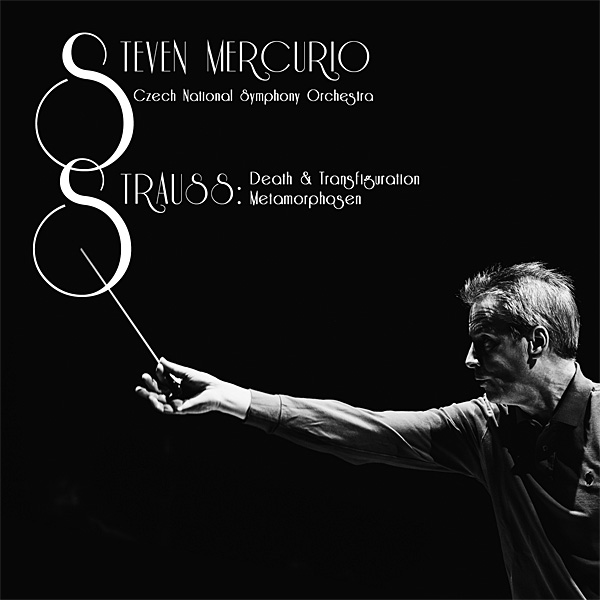
R. Strauss: Death & Transfiguration/Metamorphosen
Czech National Symphony Orchestra, Steven Mercurio, cond.
The Audiophile Society AS10 (24/192 WAV download). 2022. Steven Mercurio, prod.; David Merrill, eng.; David Chesky, 3D rendering.
Performance ****
Sonics *****
For the first classical release on The Audiophile Society, David Chesky's new, download-only label, Chesky subtly applies computer-generated 3D audio rendering to masterpieces by Richard Strauss. The music, in separate mixes for speakers (auditioned) and headphones, sounds as if heard from up close, with all the life, color, and drama that "you are here" can deliver.
Much credit is due conductor/producer Steven Mercurio. Aware that Strauss set stories in two masterpieces from opposite ends of his life, Death and Transfiguration (1889) and Metamorphosen (1945) for 23 stringed instruments, Mercurio tells those stories with all the drama and color he can muster.
I longed for more introspection and sadness at the start of Metamorphosen, but I soon found myself pulled out of my head and into Strauss's awe-inspiring, accelerating cascade of variations. This is as vivid and gripping as it gets. The same holds true for Death and Transfiguration (Tod und Verklärung), in which Strauss depicts the death of a male artist. A precursor to Elisabeth Kübler-Ross's five stages of death and dying—denial and isolation, anger, bargaining, depression, and acceptance—Strauss dedicates poetry and bombast in equal measure to depicting the sick man near death, his exhausting struggle to stay alive, his final review of his life, and his much-desired transfiguration.
As a poet, Mercurio goes only so far. The hushed reverie, emotion-driven tempo changes, and breathtakingly lush iridescent strings that make Andris Nelsons's performances of these works with the Boston Symphony Orchestra and Gewandhausorchester Leipzig so special are not to be had. But as a dramatist, Mercurio thrills.—Jason Victor Serinus
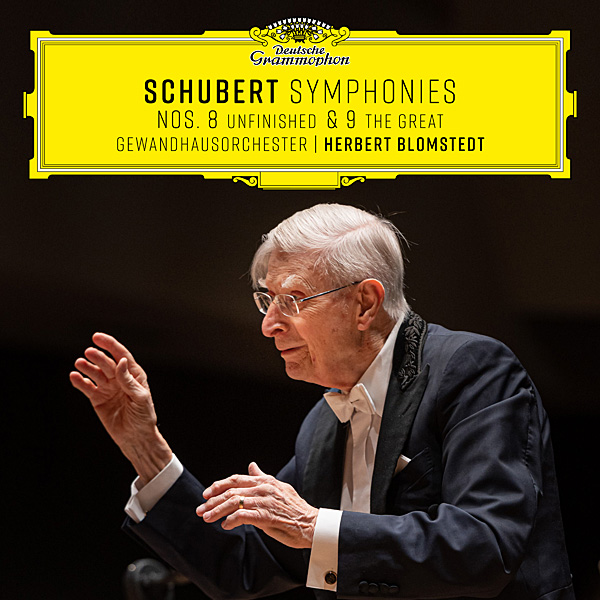
Schubert: Symphonies No.8 ("Unfinished") & No.9 ("Great")
Leipzig Gewandhaus Orchestra, Herbert Blomstedt, cond.
Deutsche Grammophon 486 3045 (2 CDs). 2022. Bernhard Güttler, prod.; René Moller, et al., engs.
Performance *****
Sonics *****
For a nonagenarian, Blomstedt keeps busy. He recorded both these same scores for Decca in San Francisco in the early 1990s, but he's more insightful this time around.
His approach is forthright, eschewing metaphysical profundities. Tempi are direct, sometimes almost brisk. Blomstedt shapes the musical line with an unerring sense of direction and finds greater dynamic variety than in his polished but insistently rich Decca accounts; his occasional rhetorical emphasis in the new recordings has much more power. The Gewandhaus strings are warm and blended, with a bit of an edge; the reeds are radiant and expressive; the brass is focused and evenly balanced.
The "Unfinished" inverts the usual pattern. Here, the first movement is ruminative, despite its no-nonsense, flowing tempo. Pianos are strictly observed, and the second theme is quietly reflective. The forte outbursts are kept proportionate to the rest. Conversely, the Andante con moto, sometimes an invitation to (ma)lingering, moves along, its second theme singing plaintively over unsettling syncopations, the winds full-throated in forte.
In the Ninth, the opening horn solo is efficient rather than weighty; the woodwinds continue the theme plaintively. The main Allegro is powerful, the exposition repeat sounding natural for once, though the landing on the recap is smudged and the trombones are bashful at their big moment in the coda. The second movement starts like a jog, turns martial in the tuttis, with a subdued ending. The Scherzo is firm and resonant; the Finale bounces buoyantly.
The engineers capture the buzz of the "Unfinished"'s pianissimo basses—a small point but indicative of the recording's excellence. The plenitude of repeats has required a second CD, with one symphony per disc.—Stephen Francis Vasta
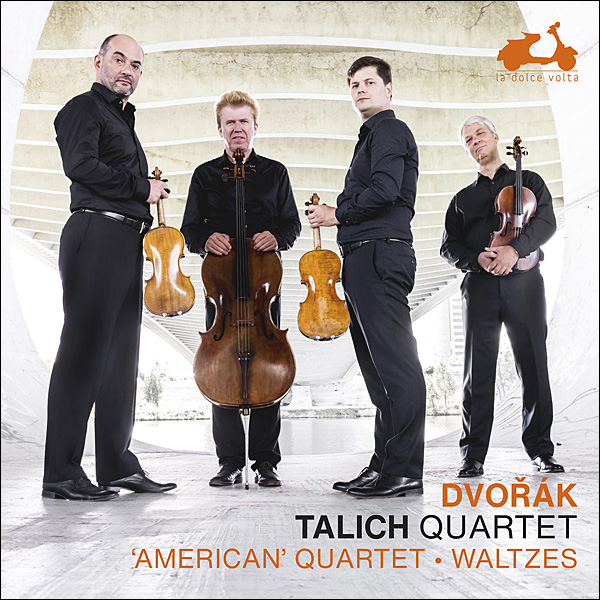
Dvořák: "American" Quartet, 8 Waltzes
Talich Quartet
La Dolce Volta LDV101 (CD). Milan Puklický, prod.; Jan Lžicāř, eng.
Performance *****
Sonics *****
This is the Talich Quartet's first recording with its new cellist, Michal Kaňka. The group maintains the firm-bowed tone, textural clarity, and impeccable tuning of its recordings for the Calliope label, but I also noticed a new impulsiveness, occasionally sacrificing absolute precision to the musical shapes. Not a bad thing.
Dvořák wrote the Waltzes for solo piano, later arranging two for string quartet; Jiří Kabát has more recently completed the set. The fetching, folklike melodic and rhythmic contours can evoke turbulence (No.2) or a sort of "pleasant melancholy" (Nos.1 and 7). The Fourth Waltz is almost danceable, like a traditional sousedka, while the rubato in the Fifth feels Viennese. The Third's accented upbeats briefly confuse the scansion, but the Sixth is light and charming without losing substance, and the players bring everything a pleasing lift.
The Quartettsatz, as it's generally called, is a full-fledged sonata movement intended for what would become the composer's C Major Quartet (No.11). Its tunefulness belies its formality and intricate development. The Talich readily outclasses the venerable Guarneri version (RCA).
Numerous high-profile quartets have rendered polished versions of the American, but the Talich proffers the genuine article, with authentic Czech inflections and a feel for the weight of the harmonic shifts. The heartfelt opening theme, warmly intoned by Mr. Kanňka, relaxes and expands into the second. The unsettled, searching Lento fills out passionately, yet with Classical restraint. The scherzo is at once incisive and leisurely, while the Finale's forward impulse carries the listener to the finish.
The vivid sonics don't overstress the high end, praise be. More good news: La Dolce Volta now has the rights to the quartet's extensive Calliope catalog. Stay tuned.—Stephen Francis Vasta
- Log in or register to post comments













